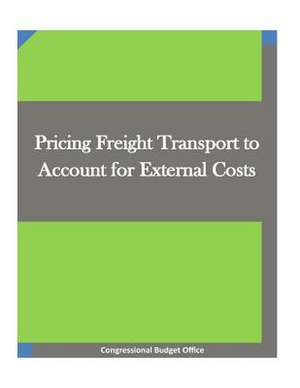Pricing Freight Transport to Account for External Costs
Autor Congressional Budget Officeen Limba Engleză Paperback
Preț: 82.56 lei
Nou
Puncte Express: 124
Preț estimativ în valută:
15.80€ • 16.54$ • 13.15£
15.80€ • 16.54$ • 13.15£
Carte disponibilă
Livrare economică 10-24 martie
Preluare comenzi: 021 569.72.76
Specificații
ISBN-13: 9781511718639
ISBN-10: 1511718633
Pagini: 44
Dimensiuni: 216 x 279 x 2 mm
Greutate: 0.13 kg
Editura: CREATESPACE
ISBN-10: 1511718633
Pagini: 44
Dimensiuni: 216 x 279 x 2 mm
Greutate: 0.13 kg
Editura: CREATESPACE
